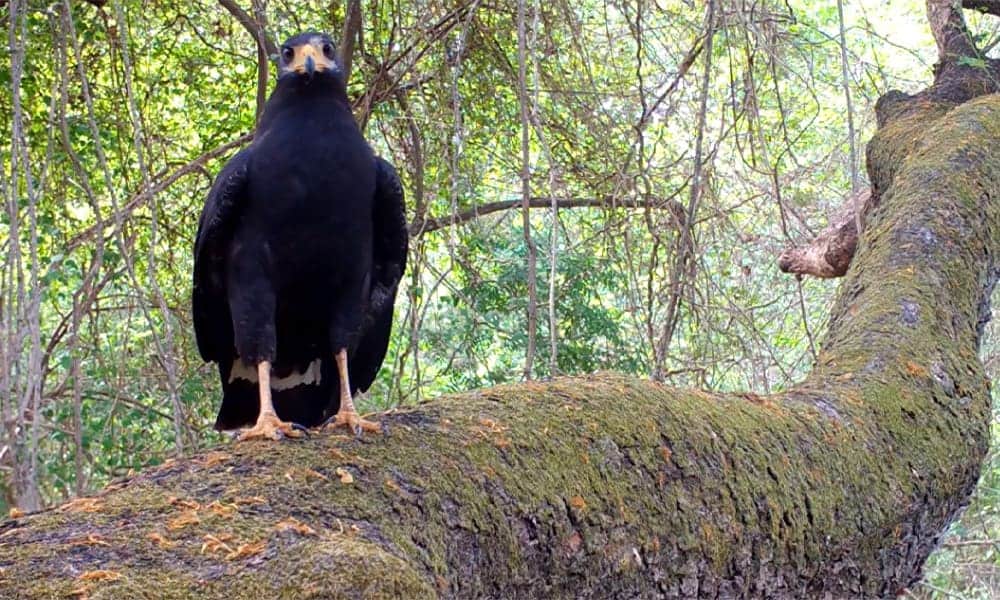It’s the big black hawk that you’ve seen around the beach.
The common black hawk has a name problem. In English anyway. Yes, there are a lot of them within their range, and yes, that’s kind of the definition of common. So, I get why it’s there. But that nomenclature immediately makes a neat looking, interesting bird seem boring.
It would be better to steal the Spanish name – Gavilán Cangrejero. It sounds cool in Spanish, and the English translation is way better, too – Crab-eating Hawk.
That name also happens to describe the distinguishing characteristic of the species. They love to eat crabs. While thinking about what to include in this article and what interesting camera trap videos I have of common black hawks, the very first thing that comes to mind is crab hunting.
I’ve recorded videos of them on beaches, in mangroves, in estuaries and in coastal forests hunting and eating a variety of crab species. They will splash around in shallow streams grabbing at fleeing freshwater crabs with their talon-tipped toes. They’ll also run around the forest floor jump-fly-hopping around a Halloween crab trying to land the proper grip to start munching away at its crunchy exoskeleton.
I actually tried to find a video of a common black hawk eating something other than a crab and couldn’t come up with one. Though that doesn’t mean it’s the only item on its menu.
The literature says they also eat reptiles, frogs, sea turtle eggs, sea turtle hatchlings and carrion. Through the passing seasons, I’m sure the environment provides different feeding opportunities to common black hawks which means they will feed on a variety of species. However, from what I’ve observed, crabs make up the large majority of their diet.
When I have a camera trap project along the coast, I like to keep my eye out for the perfect tree to try and film common black hawks eating crabs. The perfect tree has two important characteristics;
1. It’s near/overhangs a body of water
2. It’s possible for me to try and scoot up into it to place a camera trap, ideally without the threat of too much bodily harm.
I found one such tree in Guanacaste in the back of an estuary right where it was transitioning from wet estuary to dryer forest. There was a huge Guanacaste tree with big, properly-scootable limbs hanging out over a muddy bed of crab holes. I had the camera there for several months and recorded a mess of videos of Halloween crabs meeting their maker.
Another benefit of that particular Guanacaste tree was that several different hawks were using it for their crab dissections, including juveniles. Interestingly enough, juvenile common black hawks aren’t black. They’re a blotching combination of white and brown that looks similar to a ton of other hawk species. They only become black (with some white stripes on the tail) as they mature.
I will include both common black hawk adults and juveniles in the video below so you can see the difference. Enjoy.
About the Author
Vincent Losasso, founder of Guanacaste Wildlife Monitoring, is a biologist who works with camera traps throughout Costa Rica. Learn more about his projects on facebook or instagram. You can also email him at: vincent@guanacastewildlifemonitoring.com







